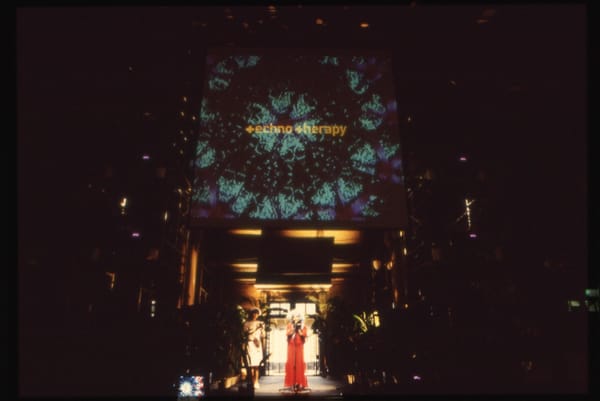Ideas
SALT: A New Kind of Platform

This is part one of a three-part report on Istanbul's newest art space. Links to the other parts can be found at the bottom of this page.

On the evening of April 8, the new Salt Beyoğlu opened its large metal doors to Istanbul’s bustling pedestrian street İstiklal Caddesi. More than 3,200 visitors crowded into the newly renovated mid-19th-century building to see the first survey of the late Hüseyin Bahri Alptekin (1957–2008), “I Am Not a Studio Artist,” which also featured specially commissioned works made by five artists who knew him well, and “Laboratory: Ars Viva,” experimental projects by four young artists based in Germany.
Despite Salt’s mission statement being emblazoned on the street-level windows—SALT EXPLORES TIMELY CRITICAL AND TIMELY ISSUES [. . .]—some opening-night visitors might have assumed that Salt is merely an expansion of the art space Platform Garanti, which Vasıf Kortun directed from its inception in 2001 and which had previously occupied the first two floors of the building. Furthermore, on opening night the three floors and 1,130-square-meters of new gallery space were filled entirely by works of contemporary art. But the following day, Kortun, now Salt’s director of research and programs, seemed to be echoing Alptekin’s disavowal of conventional artistic production with his insistence: “Salt is not a contemporary art space. We are a research institution devoted to the social and political history from the late Ottoman period to the present, modern and contemporary design in Turkey, as well as art from that time.
The mega-institution of Salt is not simply the evolution of Platform Garanti, but the combination of Platform with other organizations supported by Garanti Bank, including Garanti Gallery, which held exhibitions on design and architecture, and the Ottoman Bank Archives and Museum. Any lingering confusion about Salt’s mandate is furthered by the fact that Salt Beyoğlu is, physically, only half of the new institution, although it contains most of Salt’s exhibition space. The renovation of Salt’s second building, the neoclassical Imperial Ottoman Bank, designed by Turkish-French architect Alexandre Vallaury in 1890, is still ongoing. When it opens in mid-September in time for the Istanbul Biennial, Salt Galata will better showcase the institution’s research capacities, with a library, a 230-person auditorium, workshop spaces, another exhibition space, display areas for the archives of the Ottoman Imperial Bank, as well as those of more than 200 architects, designers and artists including Alptekin, Cengiz Çekil and Gülsün Karamustafa.
Beneath this grandiosity and the lavishness of its new facilities, Salt, so far, has retained the scrappiness of a much smaller organization. Acquiring the necessary permissions from perservationists had already significantly delayed the opening of Salt Beyoğlu, by some estimates more than six months. In late February of this year, Kortun had assured ArtAsiaPacific that Salt would open on April 8 regardless of whether or not the overhaul was fully complete. And sure enough, even on the night before the opening, legions of workers were scrambling to finish major construction work. The cafe, bookstore, various features of the ground-floor space, known as the Forum, were still in progress early the following week. A temporary shed for the electrical equipment for the renovations prevented one of Alptekin’s signature pieces, Turque Truck (1995/2005/2011) (Reconstruction of Turk Truck, a collaboration with Michael Morris), a large vehicle overloaded with sacks of colorful plastic footballs, from being installed in the courtyard behind the building. Turque Truck will roll up in May, and the rest of Salt will follow this year.
The following two parts of this report will be posted this week.







